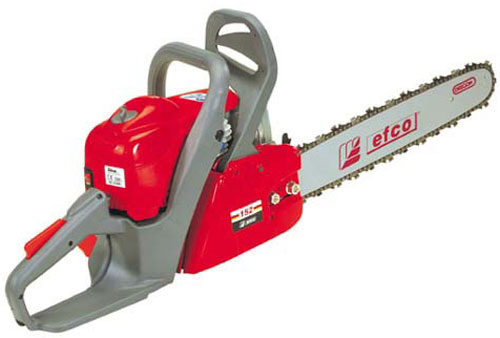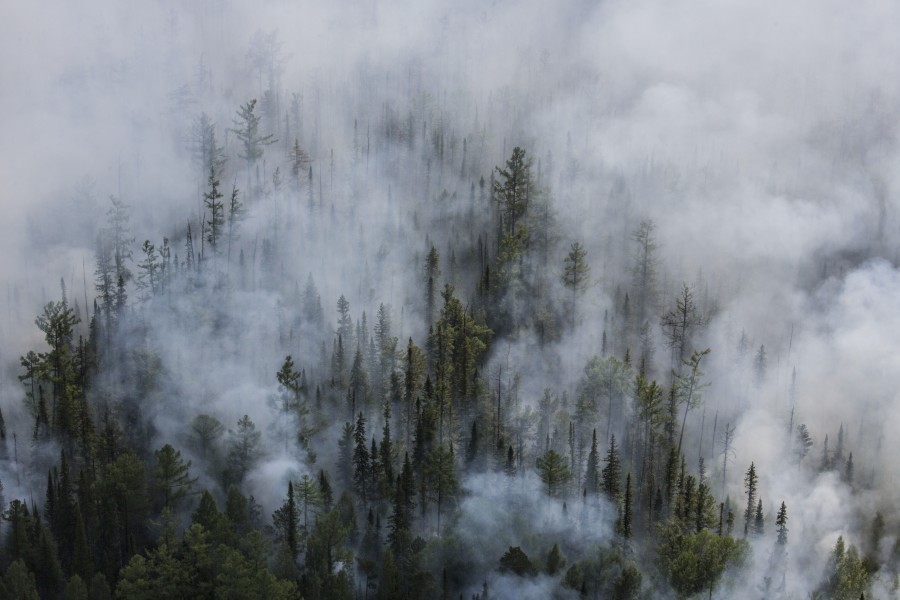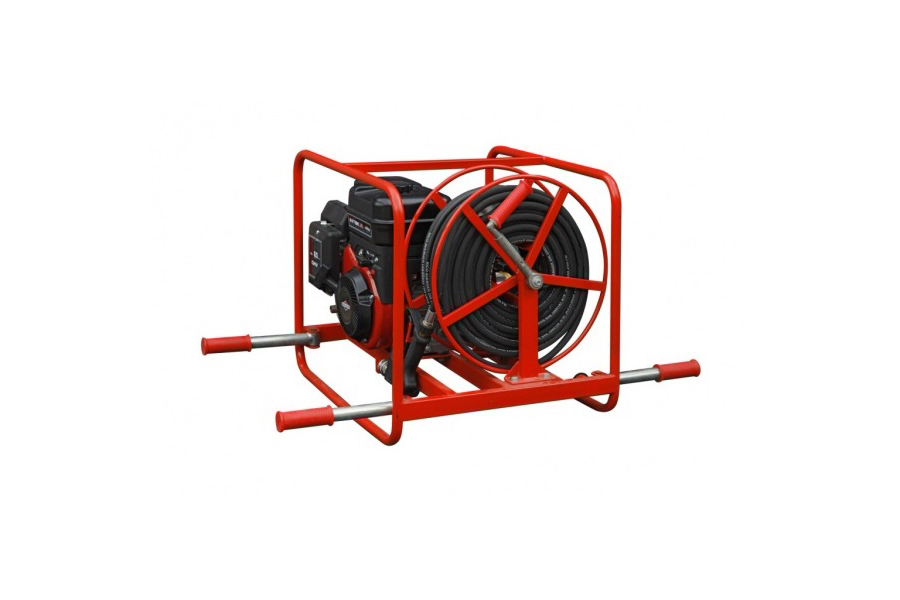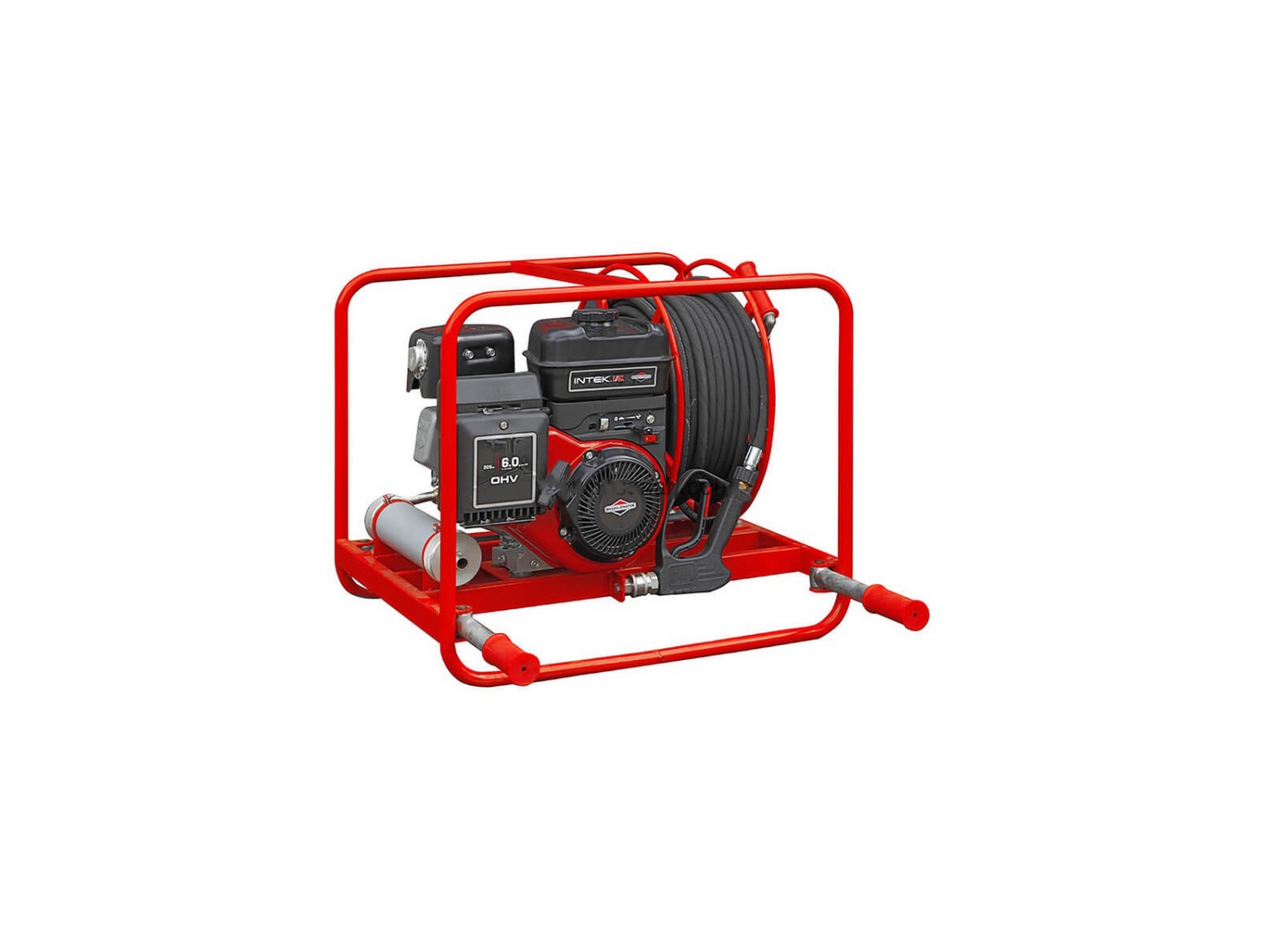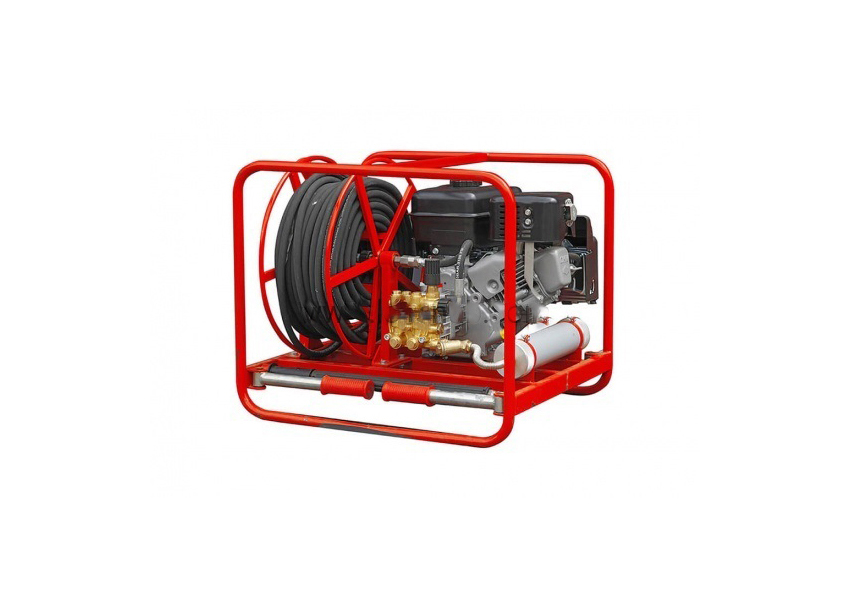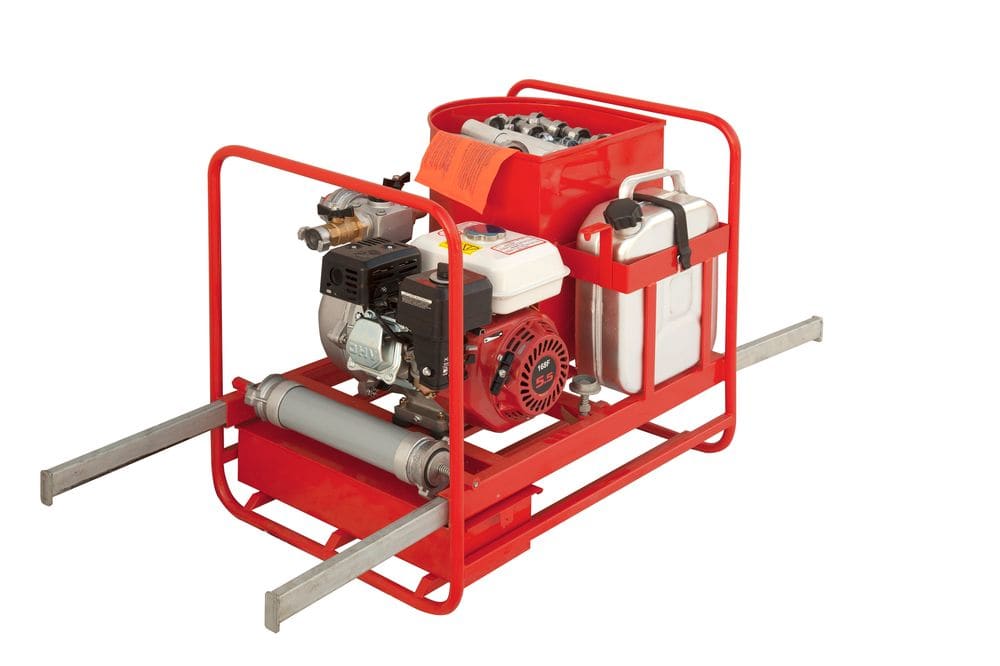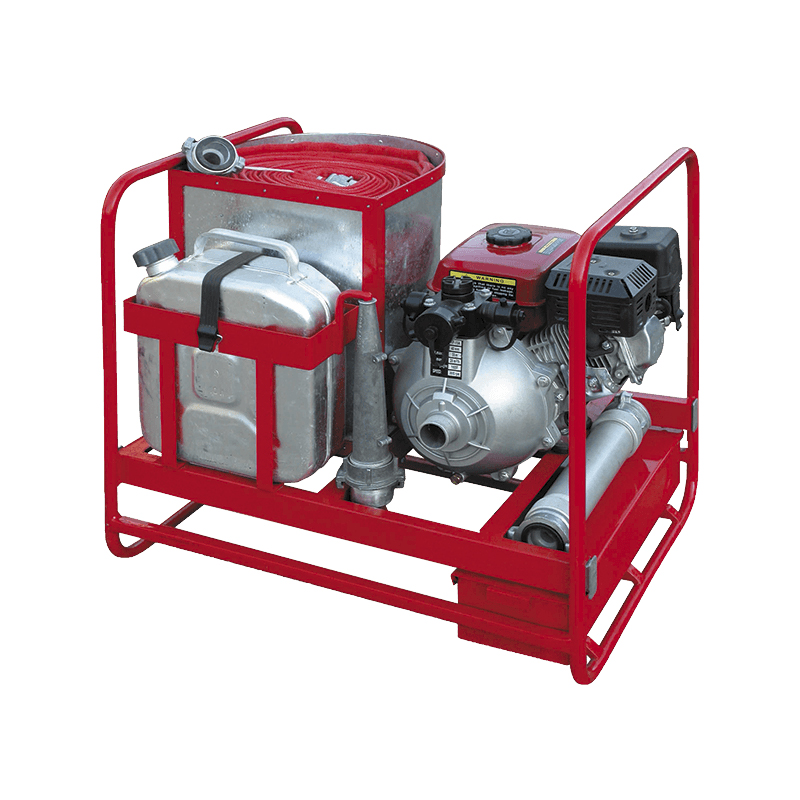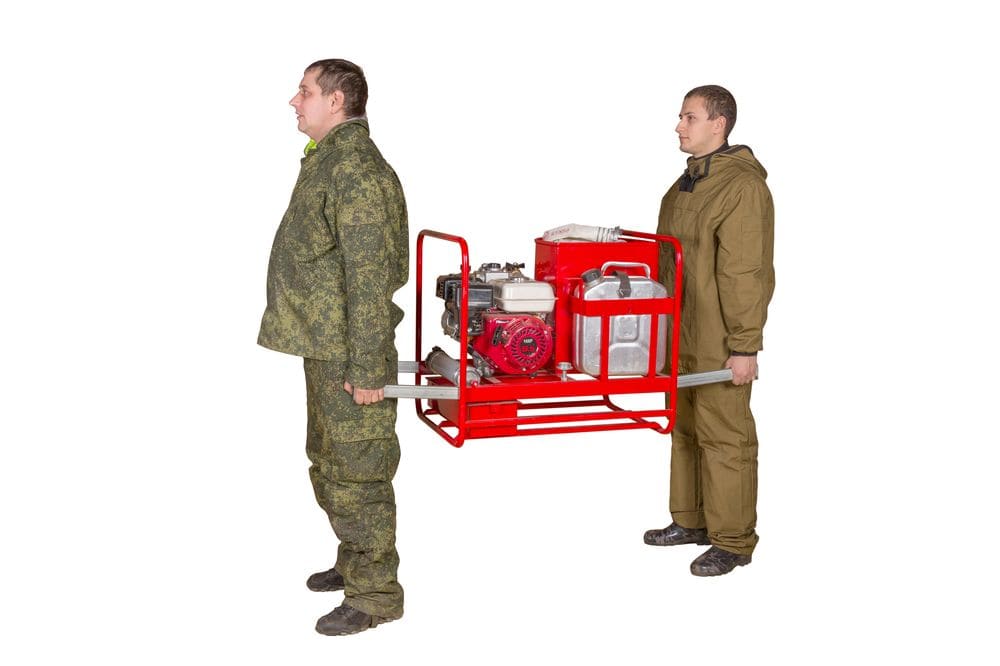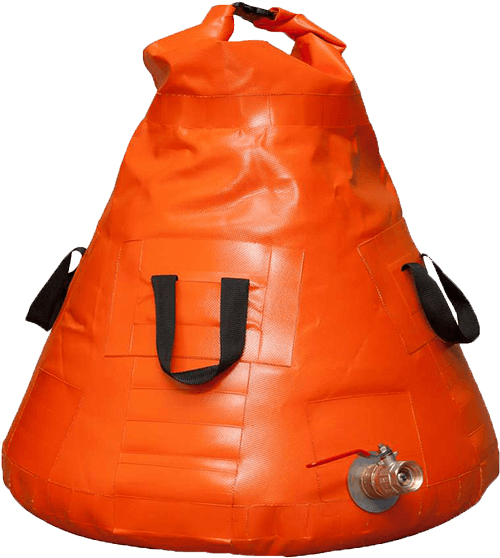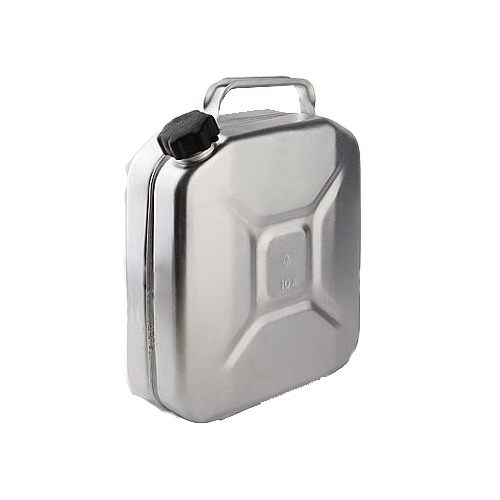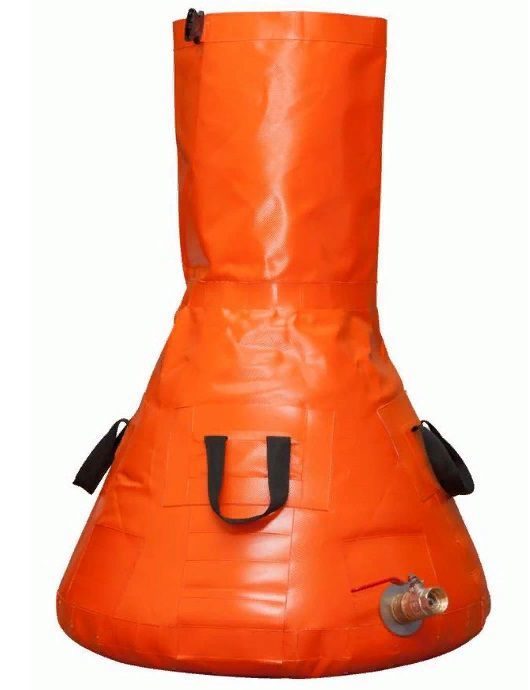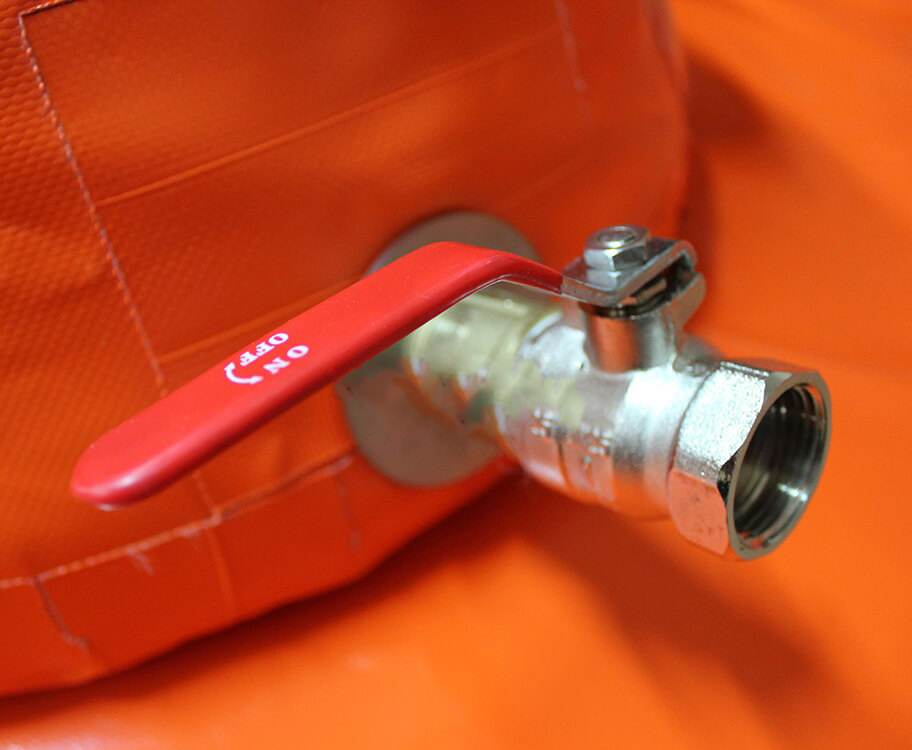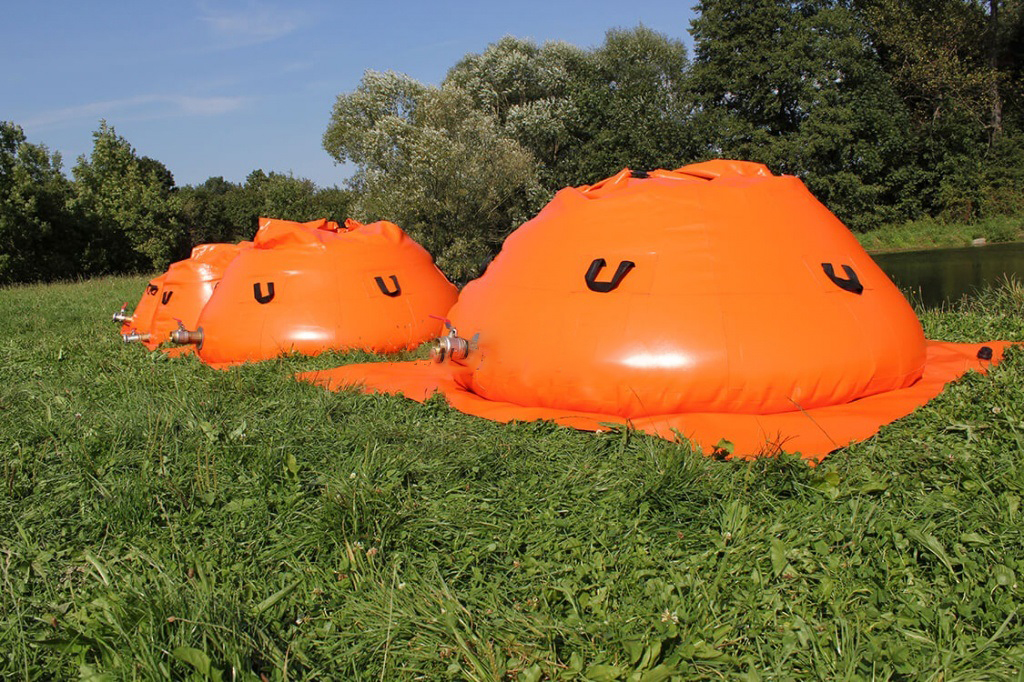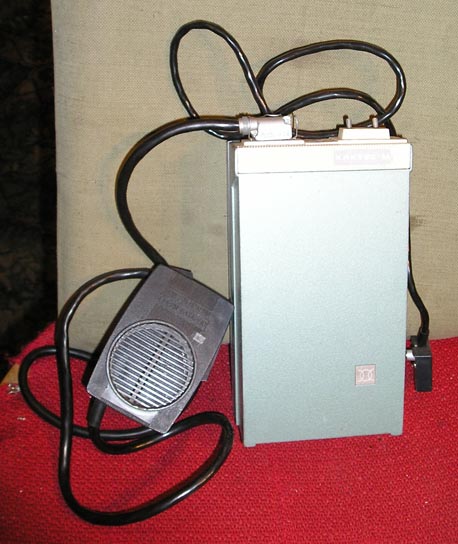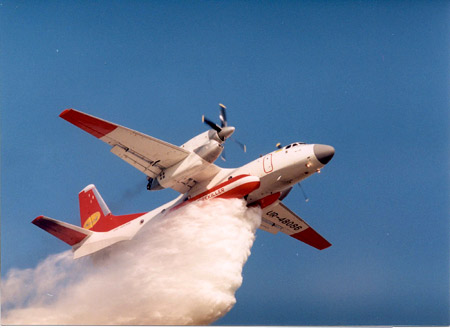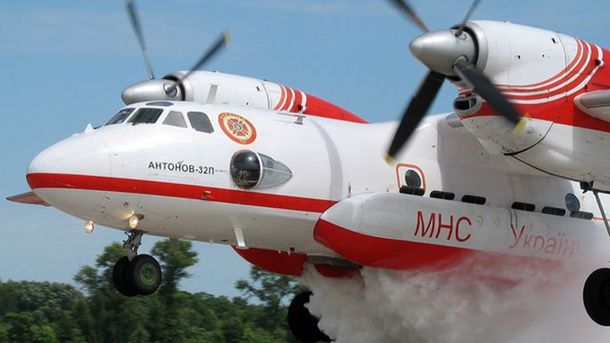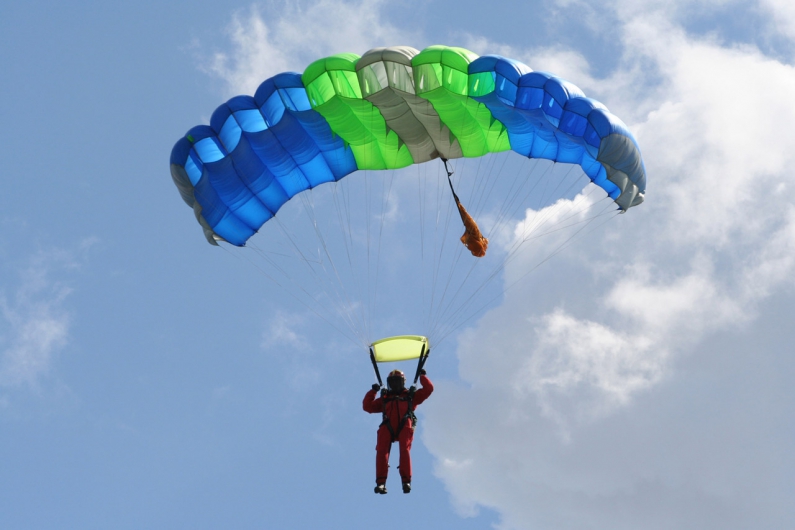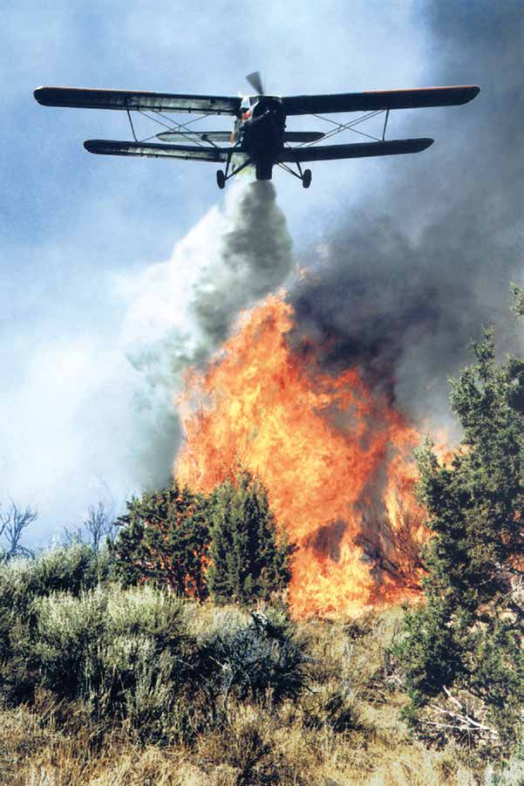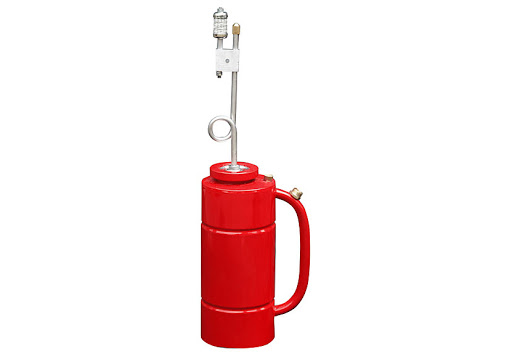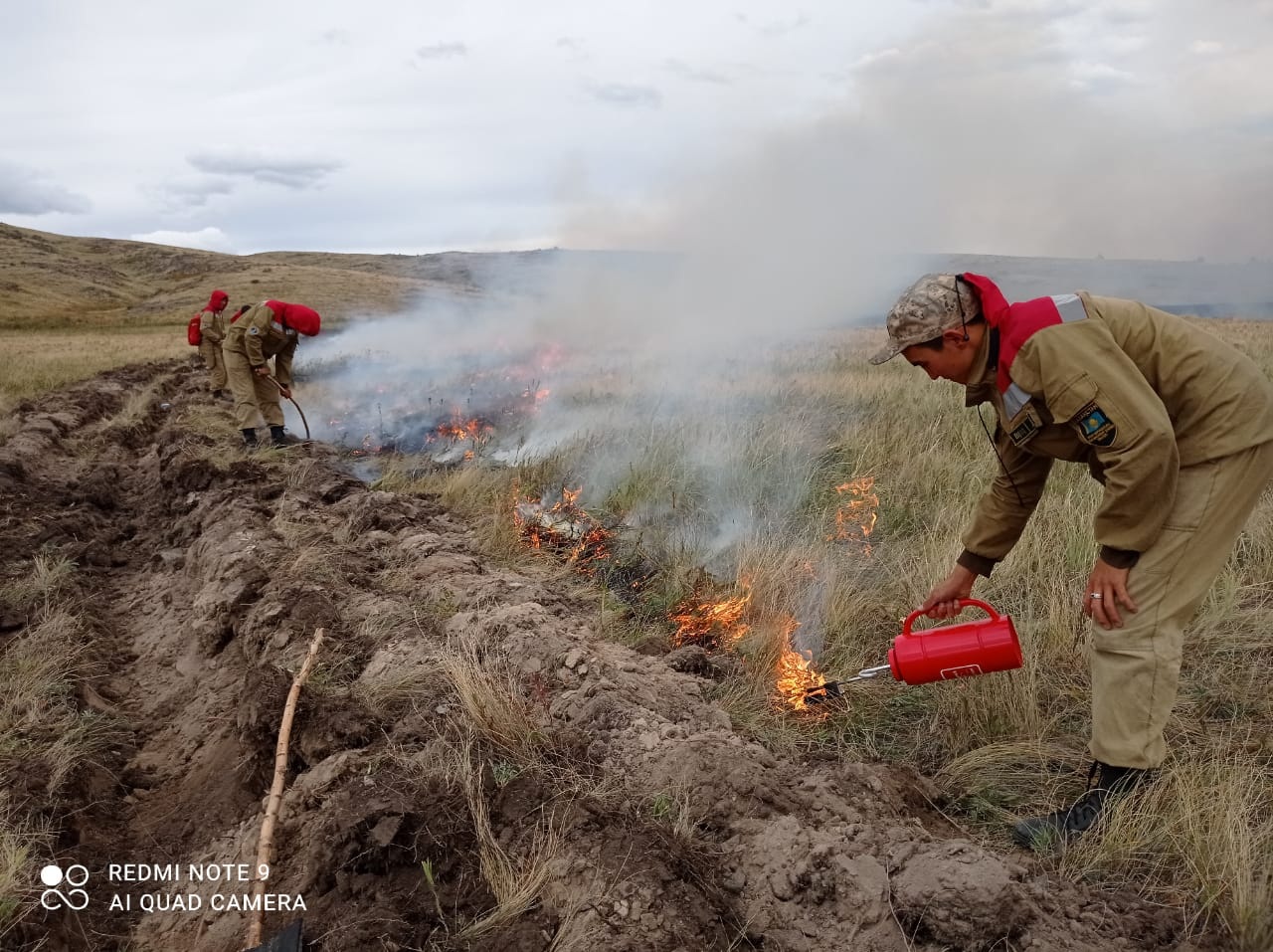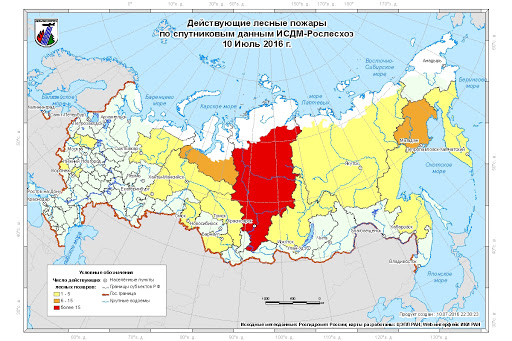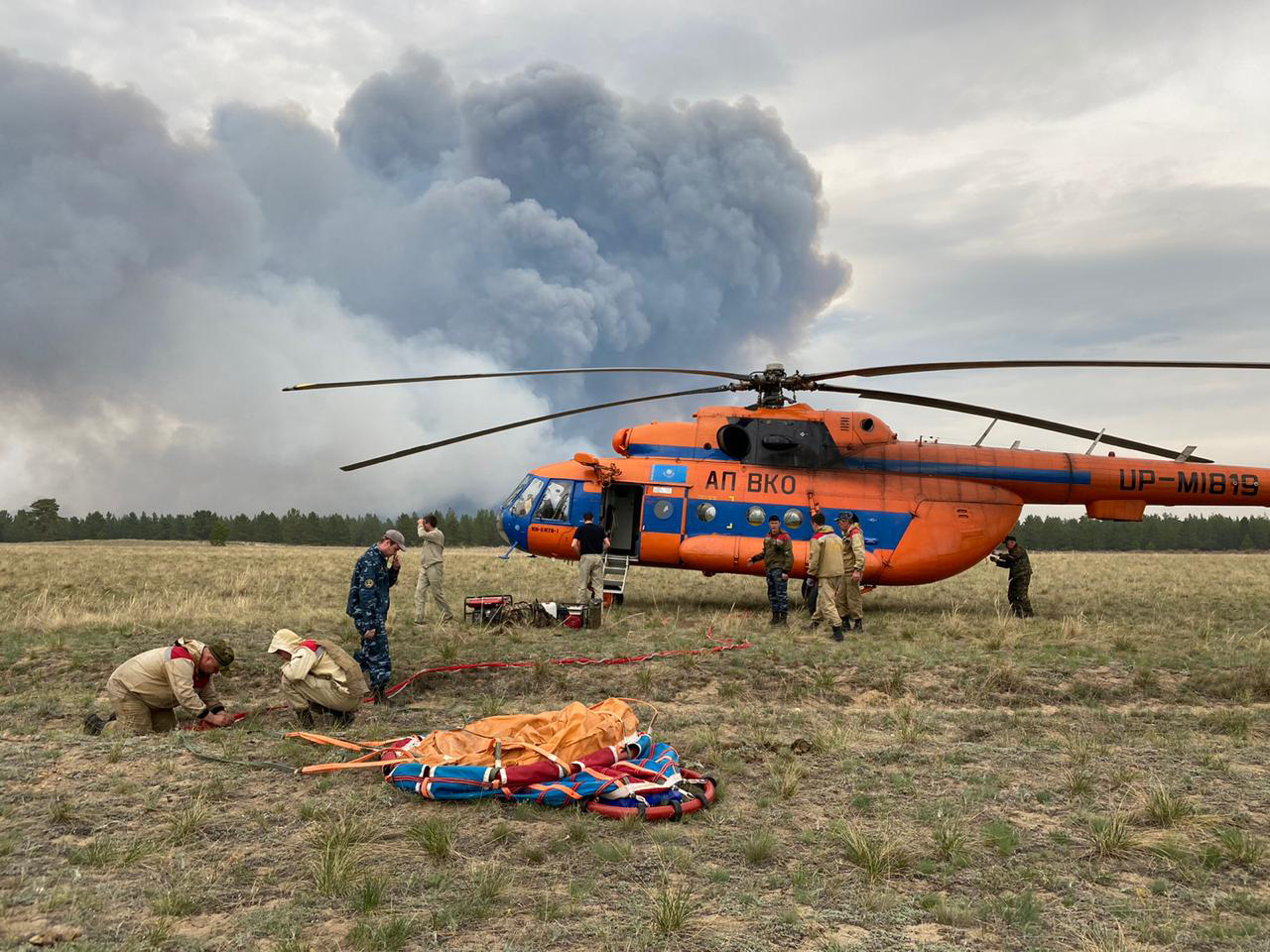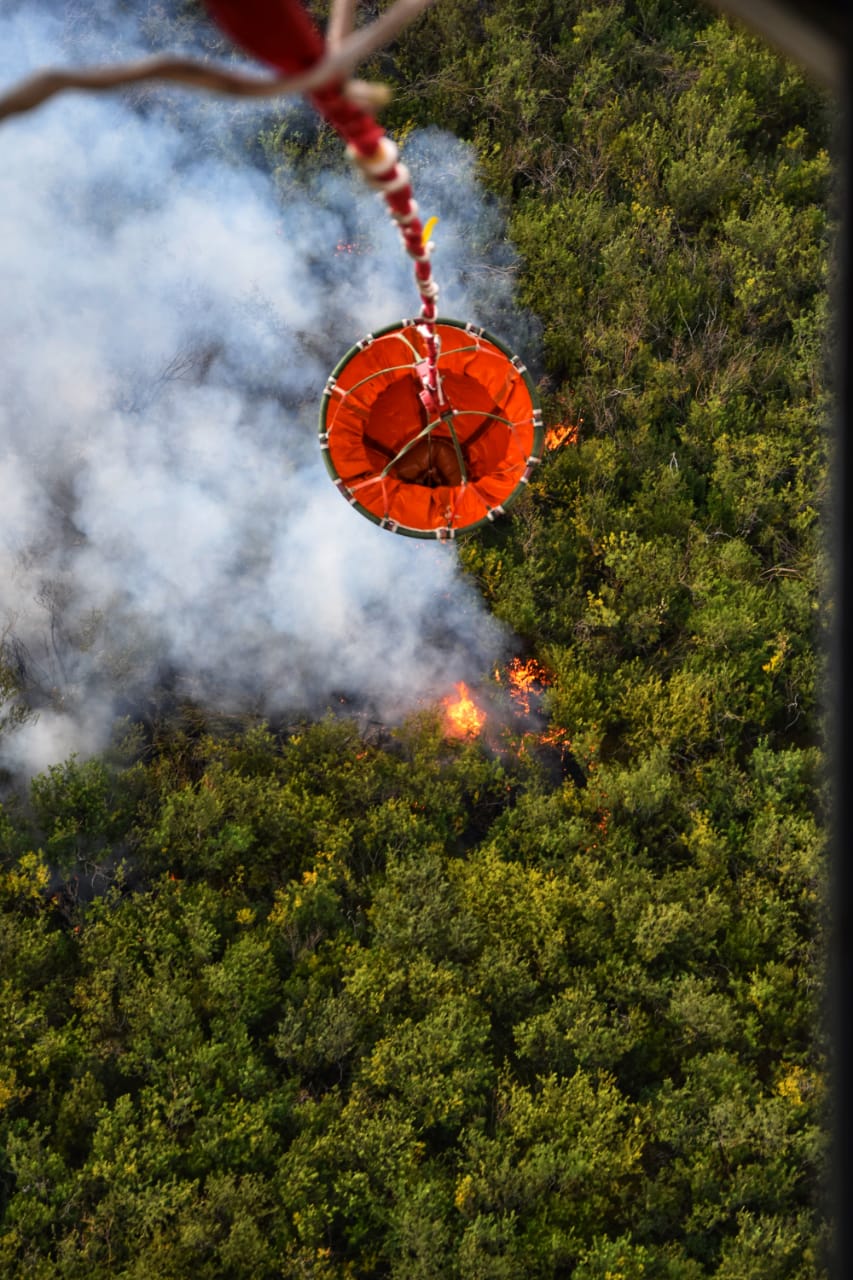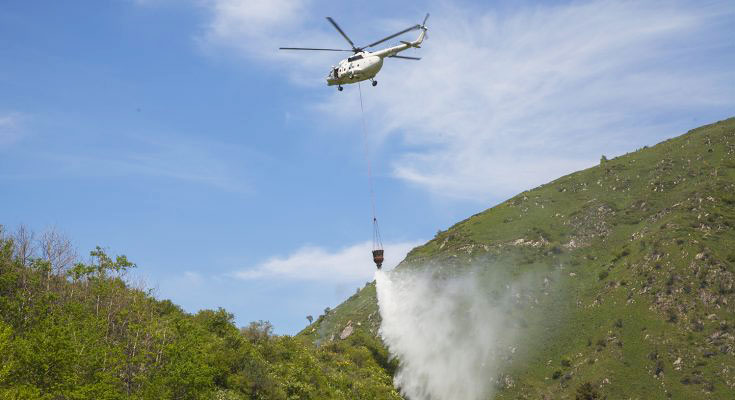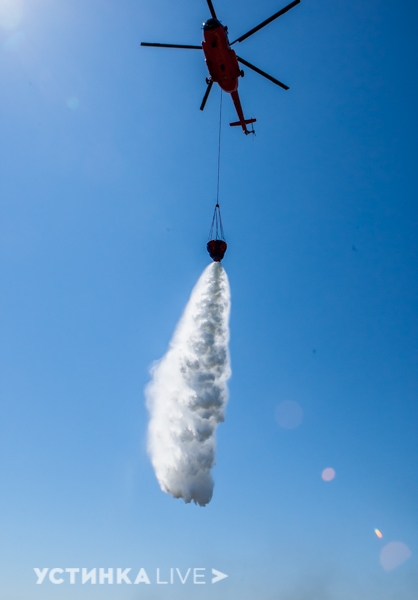Installation of high pressure (UPVD) Ermak – motorized vehicle designed for operational fire fighting by feeding water jets from a variety of tanks and other sources of clean water under high pressure, can be used to directly extinguish the fire edges and douchevina of forest combustible materials when fighting a forest fire with fire trucks or inner lining. For its compactness and efficiency, the device has earned recognition and is used by various departments. It consists of a metal frame on which a motor, a high-pressure pump, a mixing tube for a solid wetting agent, a gun, a drum and a high-pressure hose wound on it are installed.
The principle of operation of the unit is based on the effect of extinguishing with fine water under high pressure, while the water consumption is only 10-15 liters per minute.
The unit is equipped with a solid wetting agent supply system, thereby increasing the extinguishing efficiency. Mobility is provided by a lightweight and flexible high-pressure hose with a length of 50 m. With the help of the optional extension cables, the sleeve line can be extended by 50 or 75 m.
At a water consumption of UPVD of 10 l / min, a little more than 300 liters of water is enough to completely eliminate the edge of a fire on an area of 10 hectares.
The low weight and sufficient length of the high-pressure hose ensure high mobility when extinguishing multi-storey buildings. The device can be transported in cars, as well as permanently mounted on any truck or jeep.
All this makes the high-pressure fire-fighting system (UPVD) Ermak indispensable when equipping volunteer fire brigades and professional teams of municipalities, agricultural and forestry enterprises.
The set of the high-pressure fire-fighting system (UPVD) Ermak includes:
1. 4-stroke engine
2. Axial-piston pump
3. Frame
4. Folding handles for loading and carrying
5. High pressure hose reel with folding handle
6. Working gun, consisting of two parts and fixed inside the frame with a bayonet connector (quick-release design) for connection to the high-pressure hose
7. Suction hose VG-18 10 atm.
8. A mixing tube connected to the inlet line, integrated into the unit for the use of a solid wetting agent.
The installation of the UPVD Ermak (motor pump) is distinguished by the ability to create a water jet pressure at the outlet of the gun barrel up to 170 atm. with a jet supply range of up to 17 meters and a low flow rate (up to 10 liters per minute).) water, the extinguishing properties of which (wettability of forest combustible materials) when using the mixer tube with PYROCOM solid wetting agent increase at least twice, which significantly reduces the time of localization and extinguishing of a forest fire.
When extinguishing a grass-roots weak and medium intensity of burning forest fire (the flames on the edge of the fire 0,5 - 1,5 m.), forest fire with a gun-a gun moving at a distance of 3-5 meters along the edge of the fire, directing a jet of water under the base of the fire, which allows not only to extinguish the flames (to stop the fiery burning), but also to wash (to move on past the fire area) easy forest combustible materials, such as fallen leaves, pine needles, small twigs, etc., moisturize the remaining large forest materials (large branches, fallen trees, stumps, etc.) on the band width of 1-2 m of the perimeter of the fire. At the same time, the high pressure of the jet allows you to create not only a semi-cleared of forest combustible materials on the soil, but also to mineralize the soil (wash away the humus layer), which will completely localize the forest fire from combustible materials and eliminate the possibility of further spread of gorenje.
If necessary, the area passed by fire in the distance achieved by a water stream eliminates all visible heat sources.
When extinguishing the edge of a forest fire, where the height of the flame reaches 2 meters or more, a firefighter with a gun barrel retreats 5-6 meters from the burning edge and performs the operations listed above. The Gorenje fire is extinguished, which has spread through the bushes, undergrowth, undergrowth at the entire distance reached by the water jet, which prevents the transfer of fire through the strip cleared of combustible materials (minstrip) and the transition of the lower fire to the upper one.
Shipping UPWD "Ermak" to the place of work to extinguish a forest fire is usually on four-wheel vehicles, together with soft tanks (WFD) with a capacity of 100, 300, 600 and 1300 liters, which are filled with water at the exit to the fire or at work, if there are water sources, in the latter case, it is advisable to have a small forest a pump for filling water tanks soft. The ideal option is to deliver water to the work site in a tanker truck.
The transfer of the UPVD "Ermak" along the edge of a forest fire to extinguish the subsequent section, i.e., placement to a new position can be done manually by two workers.
The operation of the installation during extinguishing is provided by a group (fire brigade) of 6 people, of which:
1-one performs the duties of an engine driver;
2-the second provides extinguishing from the barrel-gun;
3-the third-provides the transfer of the pressure hose in the extinguishing zone and can replace the second one in the operation;
4 and 5 - the fourth and fifth-ensure the transfer of the RDV or other containers and filling them with water, as well as the transfer of the motor pump to a new position;
6-the sixth-the driver of the vehicle for the delivery of the Internal Affairs Department to the place of work, if necessary, can replace the motorist.
